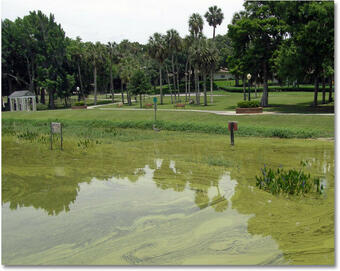Session 3: STAC Advanced Monitoring Workshop on Dissolved Oxygen
May 11, 2022 - May 11, 2022
This workshop convened virtually on Wednesday May 11.
The workshop was the last of three total workshop sessions and focused on gaps and cost challenges limiting habitat assessments as outlined by the water quality standards under the TMDL for water clarity/dissolved oxygen. Previous sessions were:
- On December 9, 2021, which focused on Water Clarity/SAV
- On April 22, 2022, which focused on Chlorophyll a criteria.
Over the last 18 years, analytical methods have been published (e.g., USEPA 2017) attempting to offer options and opportunities to extend the utility of available, traditional biweekly to monthly fixed station monitoring data, shallow water continuous monitoring data, or Dataflow collected water quality monitoring program data to fill assessment gaps. However, gaps remain in collecting monitoring data at appropriate temporal and spatial scales for providing a full accounting of bay health in all habitats. Further, new data collection programs involving Citizen Science derived data and satellite sensed water quality offer opportunities to improve accounting where space-time gaps have existed.
Workshop Objectives:
The workshop objective was to develop actionable recommendations on adaptive monitoring and assessment for the next generation Chesapeake Bay Program tidal monitoring program. Adaption will need to occur with methods that 1) improve temporal resolution in water quality data collections to address the full spectrum of characterizing conditions defining living resource life cycle needs, 2) improve spatial resolution to provide information needs on spatial variability in water quality and represent diverse tidal water habitats, 3) improve efficiency and cost effectiveness associated with data collections to expand the information return on data collection investment 4) advance water quality assessment efficiency and effectiveness with adopting applications of evolving intelligent algorithms applied to interpreting alternative data collection sources (e.g., aerial imagery, e.g., satellite-derived data), and 6) updating Bay habitat assessment tools (e.g., the Bay Interpolator) for more effectively using diverse data sources to improve habitat characterization at all management-relevant temporal and spatial scales addressing cross-cutting decision-support needs of Chesapeake Bay Program Goal Implementation Teams.
Public Agenda_STAC Advanced Monitoring Dissolved Oxygen
Steering Committee:
- Peter Tango, Chair, USGS, STAR Co-coordinator, Chair of the Criteria Assessment Protocol Workgroup
- Tish Robertson, Virginia Department of Environmental Quality
- Bill Dennison, University of Maryland Center for Environmental Science, STAC
- Brooke Landry, Maryland Department of Natural Resources
- Mark Trice, Maryland Department of Natural Resources
Workshop Speakers:
- Richard Tian (UMCES)
- Qian Zhang (UMCES)
- Peter Tango (Chair, USGS)
- Gary Shenk (USGS)
- Dong Liang (UMCES)
- Rebecca Murphy (UMCES)
- Elgin Perry (Independent Consultant)
- CBP Hypoxia Collaborative Team Members
- Bruce Vogt (NOAA)
- Jay Lazar (NOAA)
- Kevin Schabow (NOAA)
- Guangming Zheng (NOAA)
Presentations:
- Future Criteria Assessment Protocol Framework Addressing All Time Scales of Chesapeake Bay Dissolved Oxygen Criteria – Gary Shenk (USGS)
- Options for Assessing Dissolved Oxygen Criteria – Dong Liang (UMCES)
- Advances in the Development a New 4D water quality Interpolator for Chesapeake Bay — Elgin Perry (Independent Consultant)
For more information, please contact Meg Cole, STAC Coordinator, at colem@chesapeake.org.
